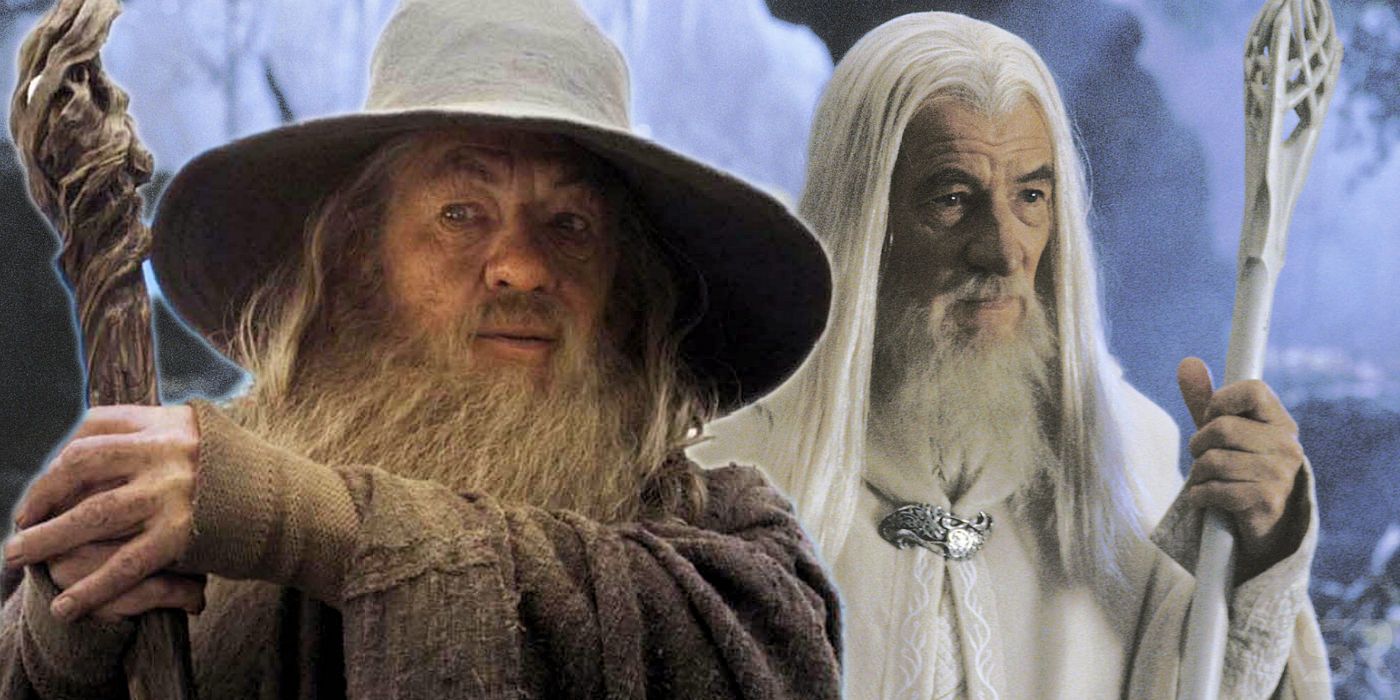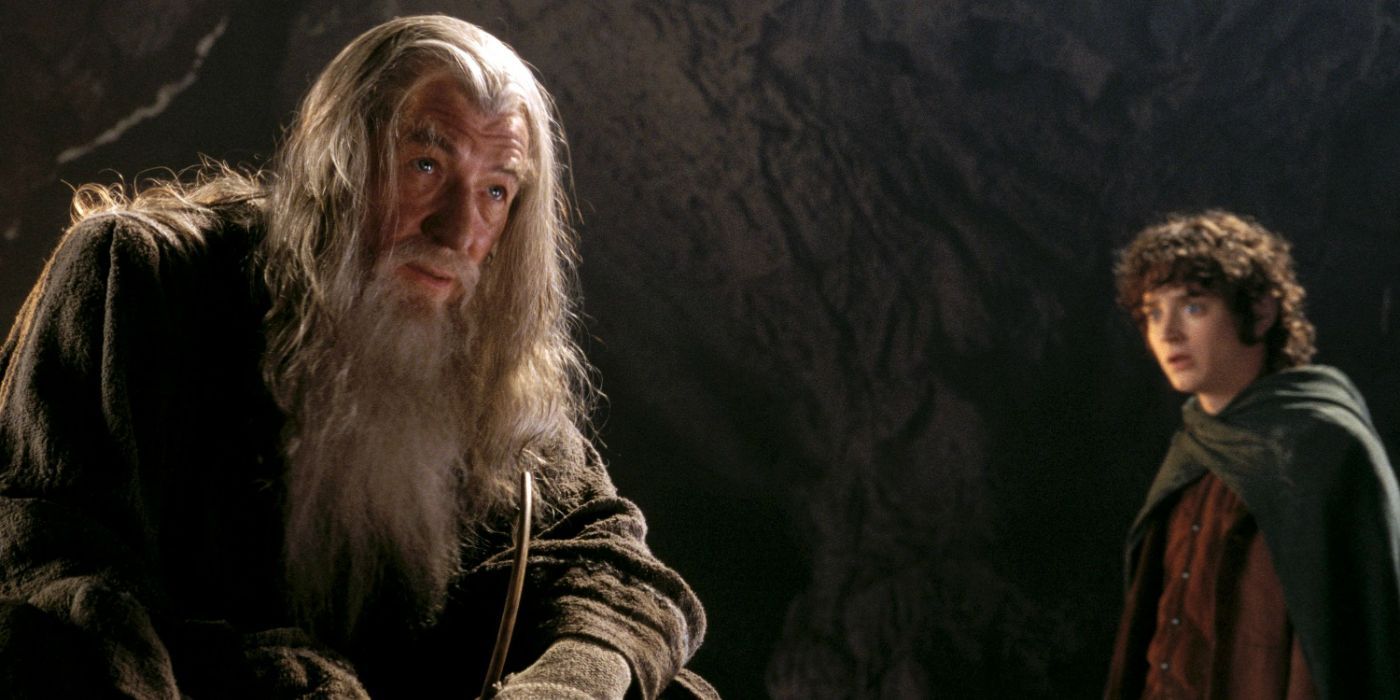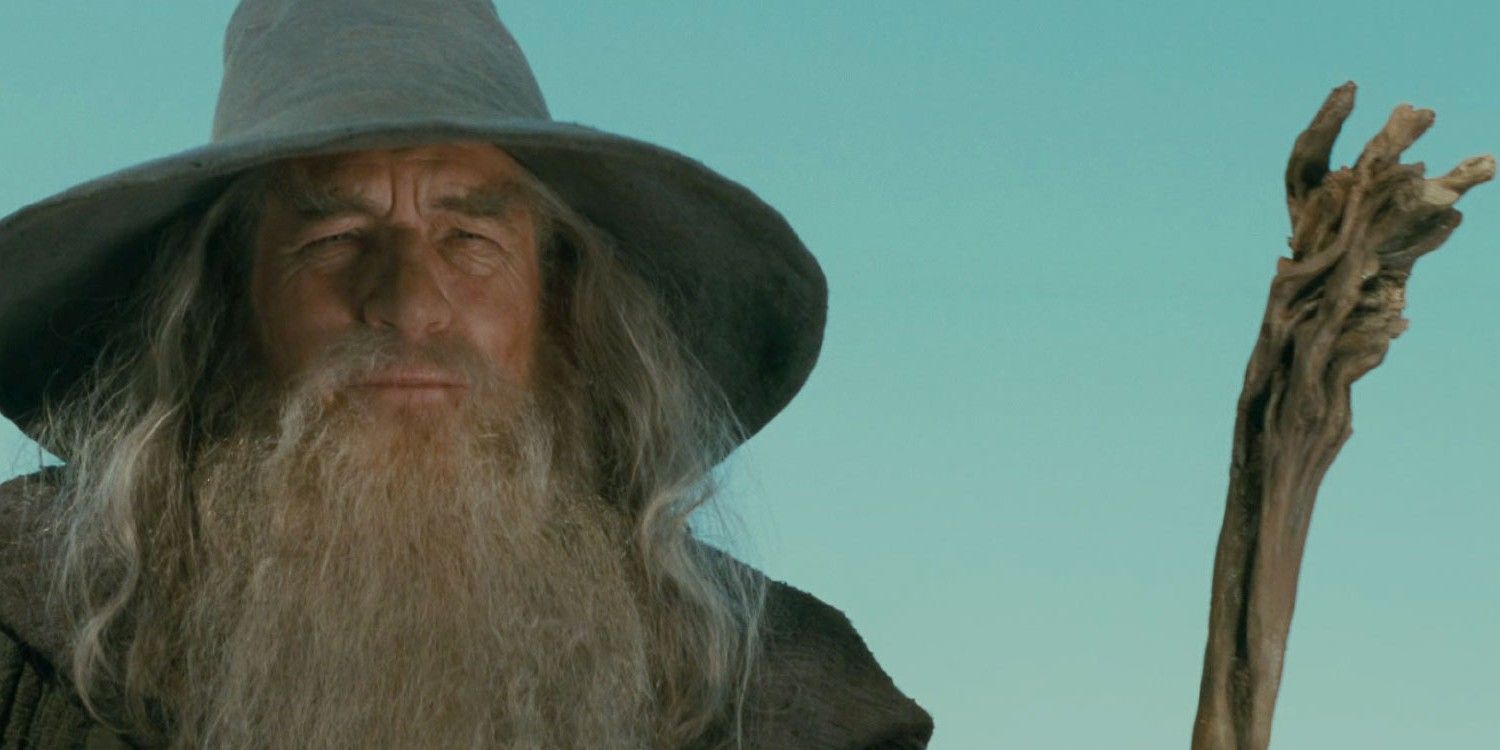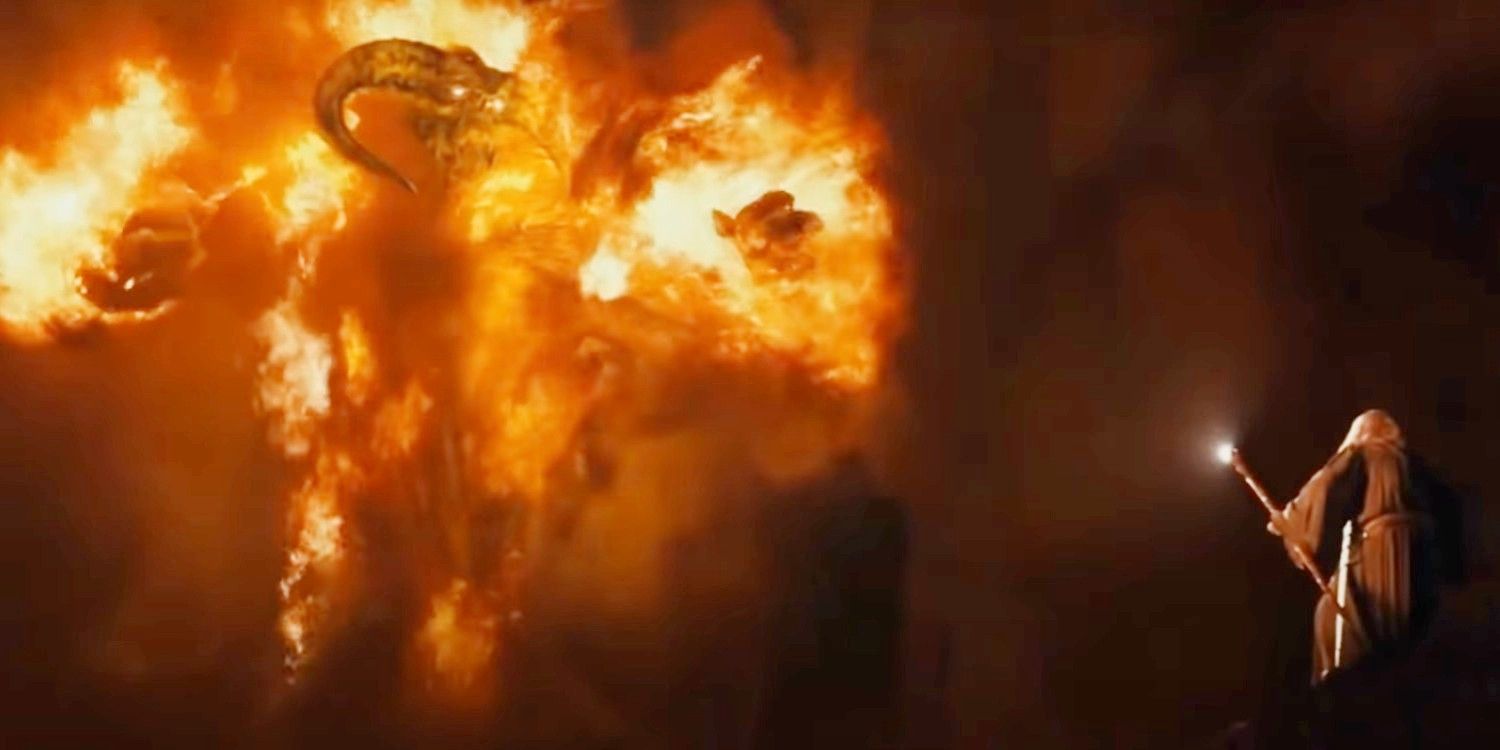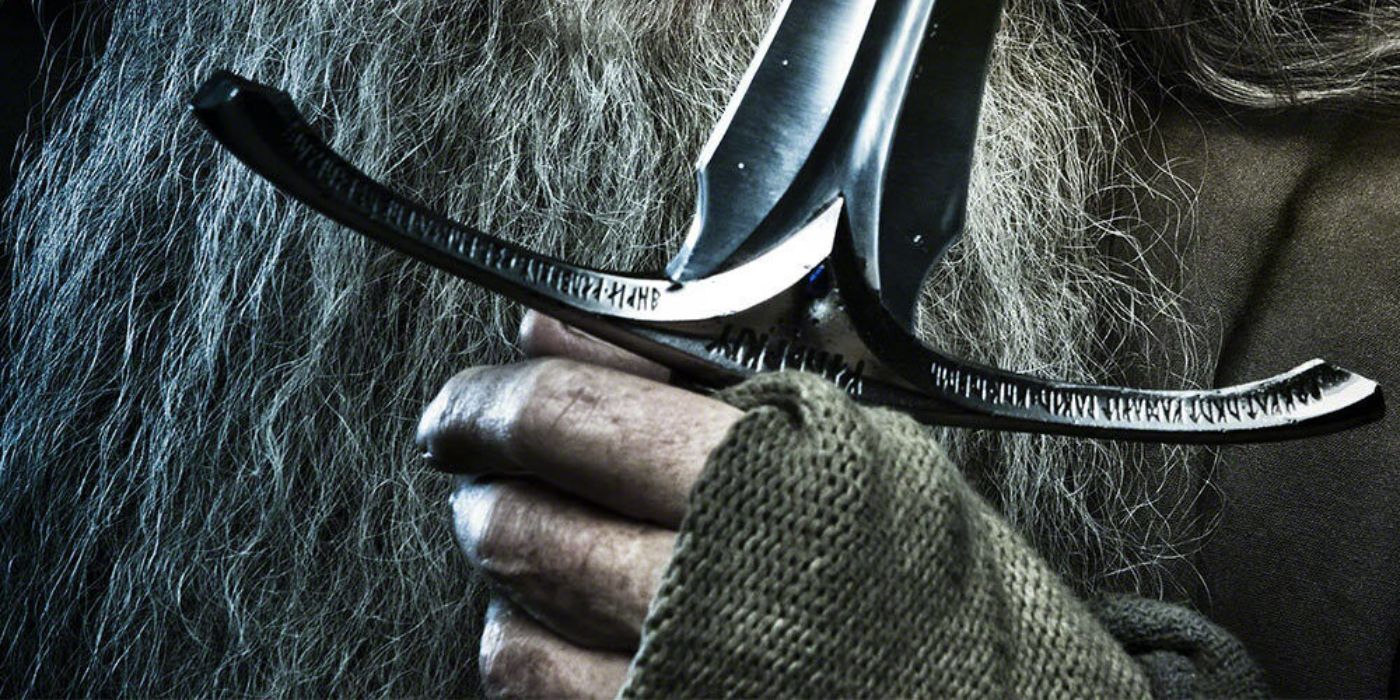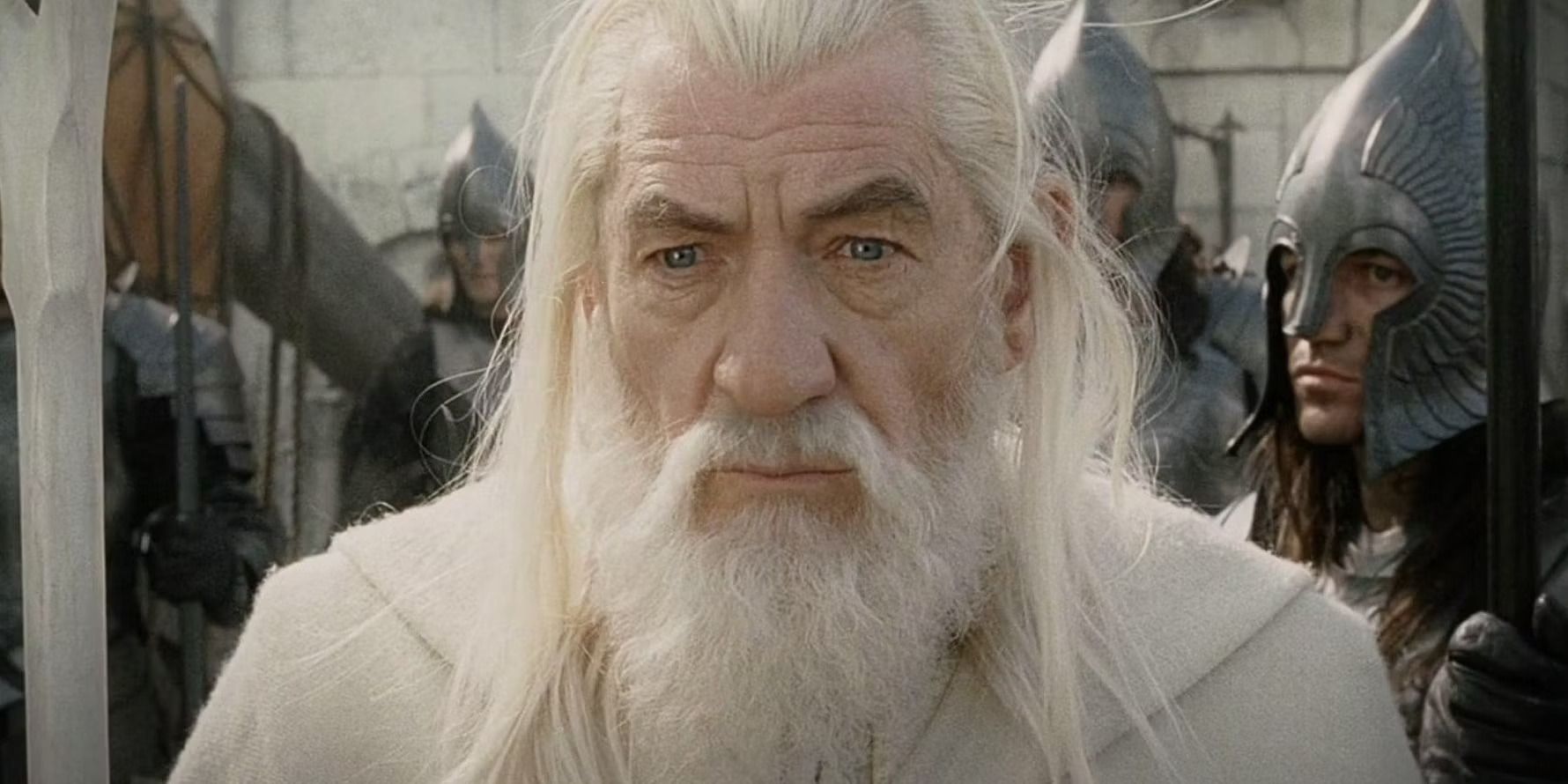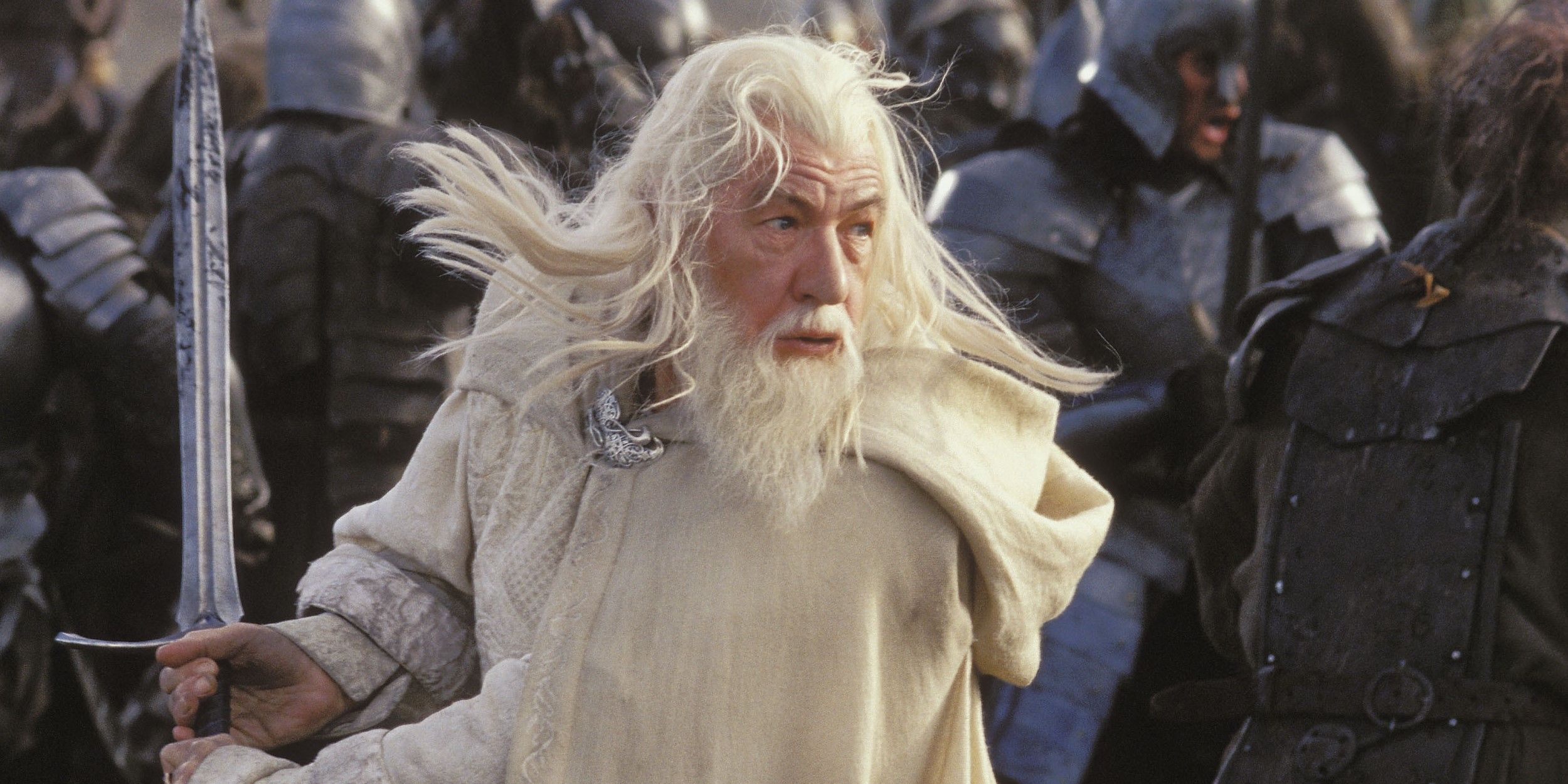Summary
- Gandalf the Grey became Gandalf the White due to a divine transformation after his battle with the Balrog, becoming a more powerful and wise being.
- Gandalf the White had greater powers and authority as the sole emissary of the Valar, though he also became more cautious and less humorous.
- Gandalf the White's transformation was unprecedented in Middle-Earth, as he was the only wizard to change color, marking a historic moment in The Lord of the Rings.
While it might appear that the change from Gandalf the Grey vs White in Lord of the Rings is little more than a costume change, the story goes a lot deeper than that. J.R.R. Tolkien is known for his extensive lore and encyclopedic extended writings in The Similarilion, and between those writings and the original book, there is a lot more than can be understood about the change that Gandalf undergoes.
After seeming to fall in battle to the Balrog during The Fellowship of the Ring, Gandalf reappeared later entirely transformed for the remainder of his journey in Middle-Earth. In The Two Towers, Gandalf the White appears to the Fellowship but tells them that he is not the same man. No longer Gandalf the Grey, he insisted that he was Gandalf the White. So, how different is Gandalf the Grey vs White, the character that was originally established in The Hobbit and The Fellowship of the Ring?
Why Gandalf The Grey Became Gandalf The White
A proper understanding of the differences between Gandalf the Grey vs. the White requires the audience to first know about Gandalf's true identity and his ancient, divine origins. Gandalf was one of the Maiar, a race of beings who assisted in the original creation of Arda (the location of Middle-Earth) and he was incredibly powerful. Originally Gandalf served as a divine emissary for the gods of creation, the Valar, and was tasked with defeating Sauron. Despite his background, Gandalf the Grey chose to roam Middle-Earth in his battered Grey Robes and kept his true powers hidden.
Over the centuries, Gandalf became acquainted with elves, dwarves, and hobbits, allowing him to share his knowledge and learn about Middle-Earth in return. However, he also spent that time gathering information on Sauron's impending return and eventually played a vital role in the discovery and destruction of the One Ring by entrusting the Ring to Bilbo and Frodo Baggins. By the end of his final Middle-Earth journey, he isn't Gandalf the Grey anymore, though — he leaves Middle-Earth with Frodo as Gandalf the White, in some ways a distinct and entirely new being.
Once the Fellowship was formed with the mission to assist Frodo in destroying the One Ring, Gandalf guided them to the Mines of Moria, where he had apparently died — but that wasn't Gandalf's end. He returned in The Two Towers as Gandalf the White, a similar but seemingly more powerful being. It was this resurrection process that transformed him from Gandalf the Grey to Gandalf the White.
Wizards in Middle-Earth aren't the same as many fantasy settings — the Istari are pseudo-deities in their own right. The god Eru, a Valar and the supreme deity of Arda, sent him back to Middle-Earth to continue his mission. To denote this change, Gandalf's wizard staff, clothes, and hair all became white, but there was more to the change than a simple palette swap.
Gandalf's Grey vs. White Forms: The Main Differences Explained
Gandalf the Grey was one of at least five Istari (alongside Saruman and Radagast the Brown, and two unknown Blue Wizards). He was powerful to say the least, but the wandering wizard's abilities paled in comparison to what he'd become after defeating the Balrog. As Gandalf the White, the sole emissary of the Valar, he was given greater powers and wisdom. Although he retained his personality and memories, this “upgraded” knowledge made Gandalf less open and more cautious.
Gandalf actor Ian McKellen, who portrayed the wizard in Peter Jackson’s trilogy and reprised the role for The Hobbit trilogy, described Gandalf the White as less funny and not as down-to-earth as the previous version of the character. Reborn and reminded of his duties as a servant of the Valar or Ainur, this Gandalf didn't have the time to smoke with Bilbo Baggins or entertain hobbits with fireworks.
His white wardrobe and staff also represented his new position among the Maiar. Previously, Saruman the White was the head of the order, but he betrayed the forces of good and joined Sauron. By taking his title, Gandalf became the leader of the wizards and was given authority to punish Saruman.
Another difference is that Gandalf the White could be harsher and applied his powers more readily. This can be seen in The Two Towers when he quickly overpowered the corrupted King Théoden, freeing him from Saruman’s influence in front of the entire court. During an extended scene, Gandalf the White easily broke Saruman’s staff despite losing to the wizard the first time.
In The Return of the King, more of Gandalf the White's powers were revealed, and was also shown to be faster and stronger, even capable of dual-wielding his staff and sword to swiftly battle Sauron’s forces. Other abilities included communicating with his horse, Shadowfax, using his mind and withstanding fire damage. While gaining power and strength in The Lord of the Rings, Gandalf the White lost the charm of Gandalf the Grey. Even Gandalf, the most powerful member of the Fellowship, would lose something of himself in the battle against Sauron.
The Balrog Killed Gandalf The Grey
Like Gandalf the White himself, the true power of the Balrog isn't fully explained in The Lord of the Rings movies. The Balrog isn't just a big scary lava monster: The Balrogs of Middle-Earth are ancient beings corrupted by Morgoth, the first evil of Middle-Earth (who was more powerful than Sauron on the same scale that Sauron is more powerful than Merry and Pippin). The specific Balrog from The Fellowship Of The Ring is named Durin's Bane. Durin's Bane was a veteran of the War of Wrath in the First Age of Middle-Earth and had fled to the depths under Khazad-dûm after Morgoth was finally defeated. That makes the Balrog well over three thousand years old.
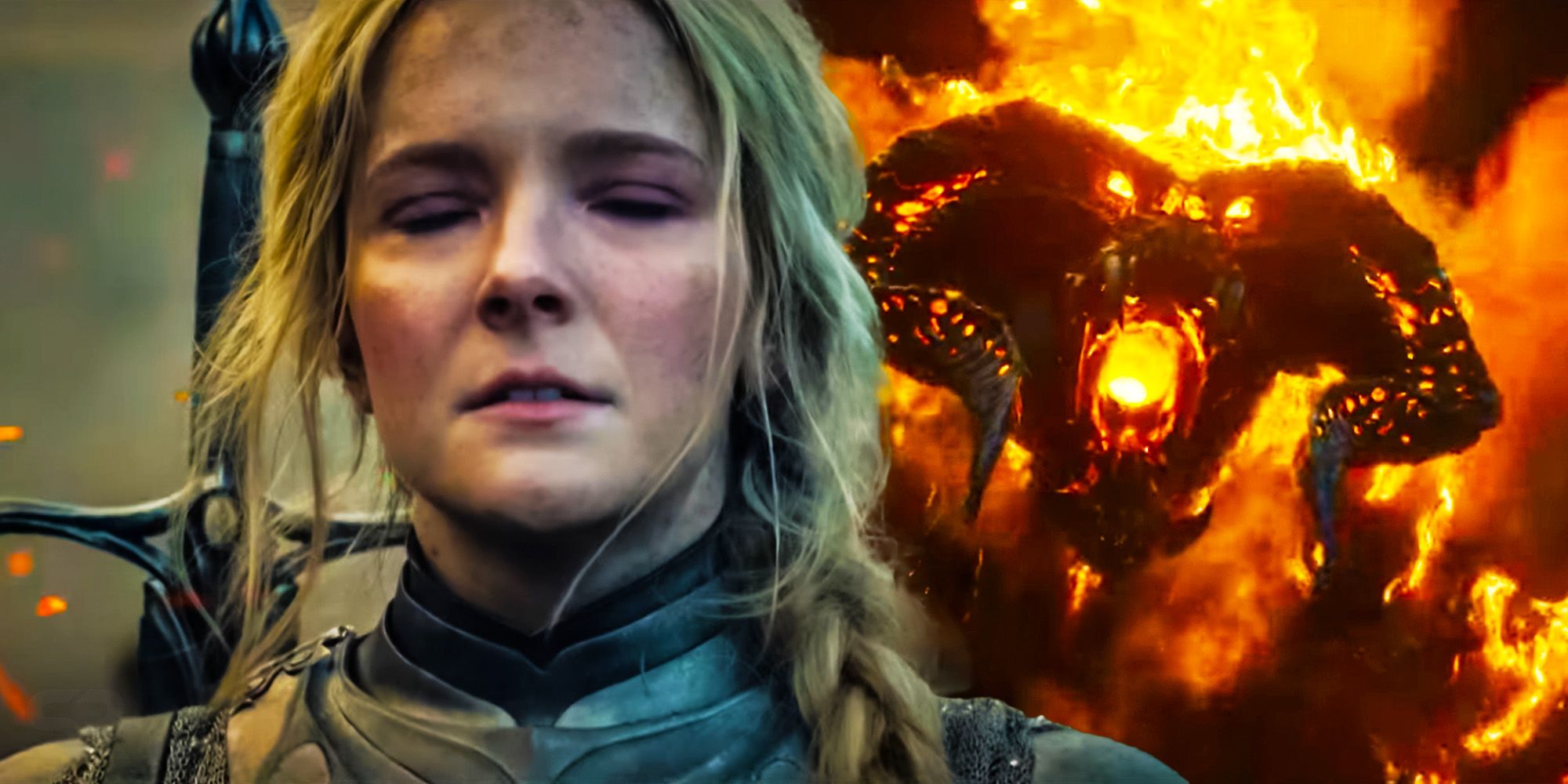
Rings Of Power Just Made LOTR's Balrog Debate More Confusing
A balrog appears in Lord of the Rings: The Rings of Power. Why is it there? And how does its appearance confuse the infamous balrog wing debate?The Istari were sent to Middle-Earth by the Valar in the Third Age, long after Morgoth's defeat, meaning The Balrog trumps Gandalf the Grey's physical age in Middle-Earth, and is one of the few beings on the continent that someone as powerful as an Istari would fear. The context here is important, though, because Gandalf's epic fight with The Balrog and subsequent resurrection feels convoluted if Durin's Bane is thought of as a visually impressive but ultimately mindless monster.
He isn't. He's the last remnant of an age and power that nearly destroyed Middle-Earth. Had the Balrog escaped on its own, it might have caused problems even for Sauron's plans, since its willpower would have been far too strong to simply fall under the influence of the One Ring like Orcs and the Ringwraiths. After letting go of the bridge in Fellowship, Gandalf and the Balrog Durin's Bane plummeted through the air into the depths of Middle-Earth, fighting throughout their fall.
The book doesn't specify the exact depth, but mathematically-minded LOTR fans have reached the consensus that it's at least several kilometers (that's pretty much the only consensus though, as the exact number is a fierce debate that still rages on). The pair then fought their way up to the peak of Middle-Earth's tallest mountain, Durin's Tower. The fight continued for three days and two nights uninterrupted, by the end of which the Balrog was slain — but the effort also killed Gandalf, explaining why Gandalf did turn White for the rest of the saga.
Middle-Earth's God Created Gandalf The White
Gandalf's body lay on the peak of Durin's Tower for 19 days, but it's what his mind/soul/spirit did in this time that explains how he became Gandalf the White. Gandalf's body was dead, but his essence continued to exist outside of time for thousands of years — Lord of the Rings' Istari were Maiar spirits before Eru sent them to Middle-Earth. The god Eru chooses to restore Gandalf's divine being to his body, but now as Gandalf the White. The god's motives aren't fully explained in the books or the movies, but Eru Ilúvatar is the omnipotent creator also known as The One — the closest Middle-Earth has to a God in the Judaeo-Christian sense, although Eru seems to be almost totally benevolent.
Restoring Gandalf as Gandalf the White likely didn't have motives beyond giving Middle-Earth a fighting chance against Sauron and his forces. This is why Gandalf the White is far more powerful than Gandalf the Grey. His physical body was dead for 19 days, but his divine essence was with Eru Ilúvatar for tens of thousands of years. Gandalf's physical body couldn't fully comprehend what he saw and experienced in that time once he returned to it, but his time as Gandalf the Grey or Mithrandir ("Grey Pilgrim") remains a distant memory to the wizard, longer ago in his personal history than the origins of the Balrog are in Middle-Earth's.
If Gandalf the White sees his life flash before his eyes when he finally dies for real, the majority of what he relives would be his time as a disembodied presence with Eru, and his time on Middle-Earth as the Grey and White wizards would be blips at the start and end of the reel. With that wider context, the differences between Gandalf the Grey vs. Gandalf the White in The Lord of the Rings become much clearer. Gandalf the Grey was one of five near-mythical caretakers sent to watch over Middle-Earth, while Gandalf the White is the singular physical embodiment of The One's will and a direct divine intervention from Eru Ilúvatar.
Gandalf The White Was The Only Wizard To Change Color In LOTR
Gandalf's resurrection as a wizard of a different color was completely unprecedented within the world of Middle Earth. The color of each wizard is not simply an aesthetic choice, but instead reflects their power, with White representing the strongest magical power and authority. Saruman previously held this position, but after allying with Sauron he abandoned the original purpose of the wizards, allowing Gandalf to take his place.
Tolkien's work makes reference to two different Blue Wizards who traveled east before the War of the Ring, but not much is known about them, including whether they existed at the same time. Gandalf is the only known example of a wizard who was brought back with a different color. So, rather than Gandalf's resurrection and transformation being simply another example of his wizardly power, it marked a historic moment in the world of The Lord of the Rings.
Is Gandalf The White The Most Powerful Person In LOTR?
Gandalf the White is one of the most powerful characters in Lord of the Rings. When it comes to Gandalf the Grey vs White, there isn't even a competition as the White version is more powerful in every way. He had a new host of powers and wisdom and defeated Saruman and his Uruk-Hai army pretty easily in the War of the Ring. He also showed up in The Rings of Power and was powerful there too, showing he was always on the verge of greatness when it came to power in Middle Earth.
However, there are characters who can rival Gandolf in power, even after he became Gandalf the White. The Witch King of Angmar is the greatest of the Nazgûl and easily the deadliest. He was imbued with dark magic from Minas Horgal, and this allowed him to kill King Theoden and destroy Gandalf's staff. He was not as powerful, though, as Galadriel, the strongest elf in The Lord of the Rings. Her power was greater than any other elf and earned her a spot at the White Council. She held her own against Sauron until Gandalf's return. Finally, even in defeat, Sauron was one of the most powerful characters and matched up with Gandalf.

